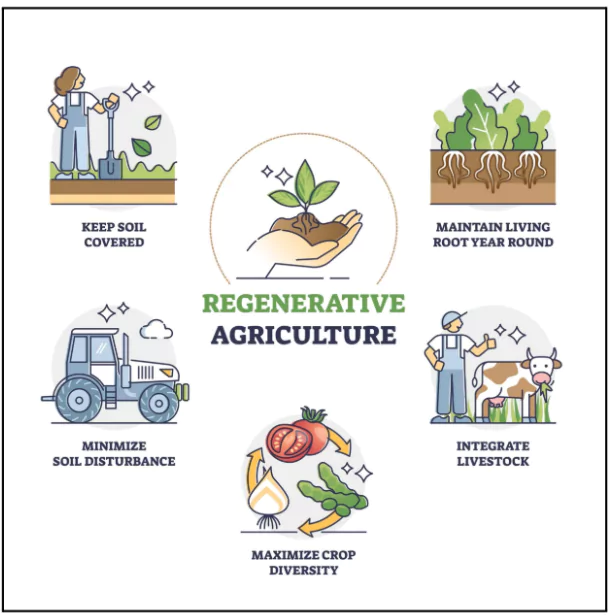Mains Syllabus: GS III - Indian Economy and issues relating to planning, mobilization, of resources, growth, development and employment
Why in the News?
World Environment Day is observed annually on June 5.
What are the sustainability challenges faced by India’s textile industry?
- Geopolitical Tensions – Trade restrictions, trade wars, and conflicts negatively affect the global textile trade, impacting Indian manufacturers.
- Fragmented Supply Chains – The textile value chain in India, from raw material sourcing to final product, is highly fragmented.
Cotton is grown in Gujarat, Maharashtra, Madhya Pradesh, Andhra Pradesh and Rajasthan, but 45 % of spindles are installed in Tamil Nadu alone.
- The fragmented nature of the supply chain makes it difficult to coordinate logistics, leading to longer lead times, higher transportation costs, and potential disruptions.
- Product Price Volatility – Unprecedented volatility in cotton prices, both domestically and internationally, has been a major concern.
- Evolving Consumer Demands – Consumers are increasingly aware of the environmental impact of their choices and are demanding sustainable and eco-friendly textiles like organic cotton, recycled polyester, and Tencel.
- In this evolving landscape, to achieve a market competitive edge businesses should explore beyond financial goals, as adaptability, purpose-led innovation, and resilience are also essential.
How does regenerative farming help India’s textile industry?
Regenerative farming, also known as regenerative agriculture, is a holistic approach to food and farming systems that aims to restore and enhance the health of soils, ecosystems, and communities.

- Viable Model - In India, regenerative (regen) farming is a viable model amidst concerns of raw material sourcing, climate change, land degradation, and soil erosion.
- Growth Tracking - Real-time data sharing is enabled for growth tracking and transparency.
- Integrated Model - This ecosystem leads to a business model where farmers remain connected with certification bodies, manufacturers, and global market brands.
- Better Risk Management and Stable Income – It provides higher yields, improved climate resilience, reduced reliance on chemical fertilizers, and more cost-effective inputs.
- Tackles Business Concerns – The method helps in achieving rural engagement, multi-stakeholder collaborations, and even breaking gender stereotypes in farming.
- Supply Chain Enhancement - It can also enhance traceability, sustainability compliance, and product quality assurance across the supply chain.
|
Government Initiatives on Regen Farming
|
- Regen farming practices are already under way in India, with the Ministry of Agriculture and Farmers Welfare considering approximately over one million hectares of farmland for further pilot projects in the coming years.
- Farmers are equipped with digital resource-based training on regen farming practices.
- In Aurangabad, Maharashtra, over 6,000 farmers have joined the Regenerative Cotton Program, which has already shown positive impacts.
|
How do traceability solution benefit textile sector?
Traceability is the ability to trace all processes from procurement of raw materials to production, consumption and disposal to clarify "when and where the product was produced by whom."
- Robust AI and tech-driven traceability solutions are the next big strategies that the Indian textile sector can adopt.
- Ensure Product Credibility - Traceable supply chains have a strong potential to ensure product credibility across all stages- sourcing, production, and distribution.
- Over 37% consumers in the 2023 Consumer Circularity Survey identified sustainability and traceability as important criteria in their purchases.
- Strengthens Authenticity and Accountability - Traceability has already transformed from the logistical tracking of a product to delivering a narrative of authenticity and brand accountability.
- Meeting International Criteria - The EU also emphasises transparency and traceability in the textile industry through international frameworks to protect consumer and environmental concerns.
- Expanding Market Presence - With the concessions for textiles addressed by the India-U.K. FTA, traceability solutions can help industry players leverage sustainability stories and thereby expand their market presence.
How does product circularity help textile industry?
- Product circularity, a key aspect of the circular economy, focuses on extending the lifespan of products and recovering or repurposing them at the end of their useful life.
- Reducing Waste – Factory waste can be reengineered for newer designs and eventually returned to the soil after a longer product lifecycle.
- Competitive Edge – A well-functioning circular economy can lead to product innovation, generating more jobs, and an economic competitive edge.
- Sustainability – With the circularity model, India can therefore reduce its reliance on unused raw materials and build a better, self-reliant, and globally relevant system for generations
- Longer Life Cycle of Product – In circularity model, Product designs evolve from recyclability to also having a longer lifecycle.
What lies ahead?
- The textile industry is projected to grow to $350 billion by 2030 and could add 35 million new jobs.
- For India to establish its global trade authority, the cultivation, sourcing, and manufacturing practices must be re-examined with a sustainable lens.
- Concepts such as regenerative farming, traceability solutions, and product circularity are becoming the operational standards and core manufacturing actions in the industry.
- As the sixth-largest exporter of textiles globally, adopting these practices would help the textile industry in strengthening its leadership.
Reference
The Hindu | The seeds of sustainability for India’s textile leadership
